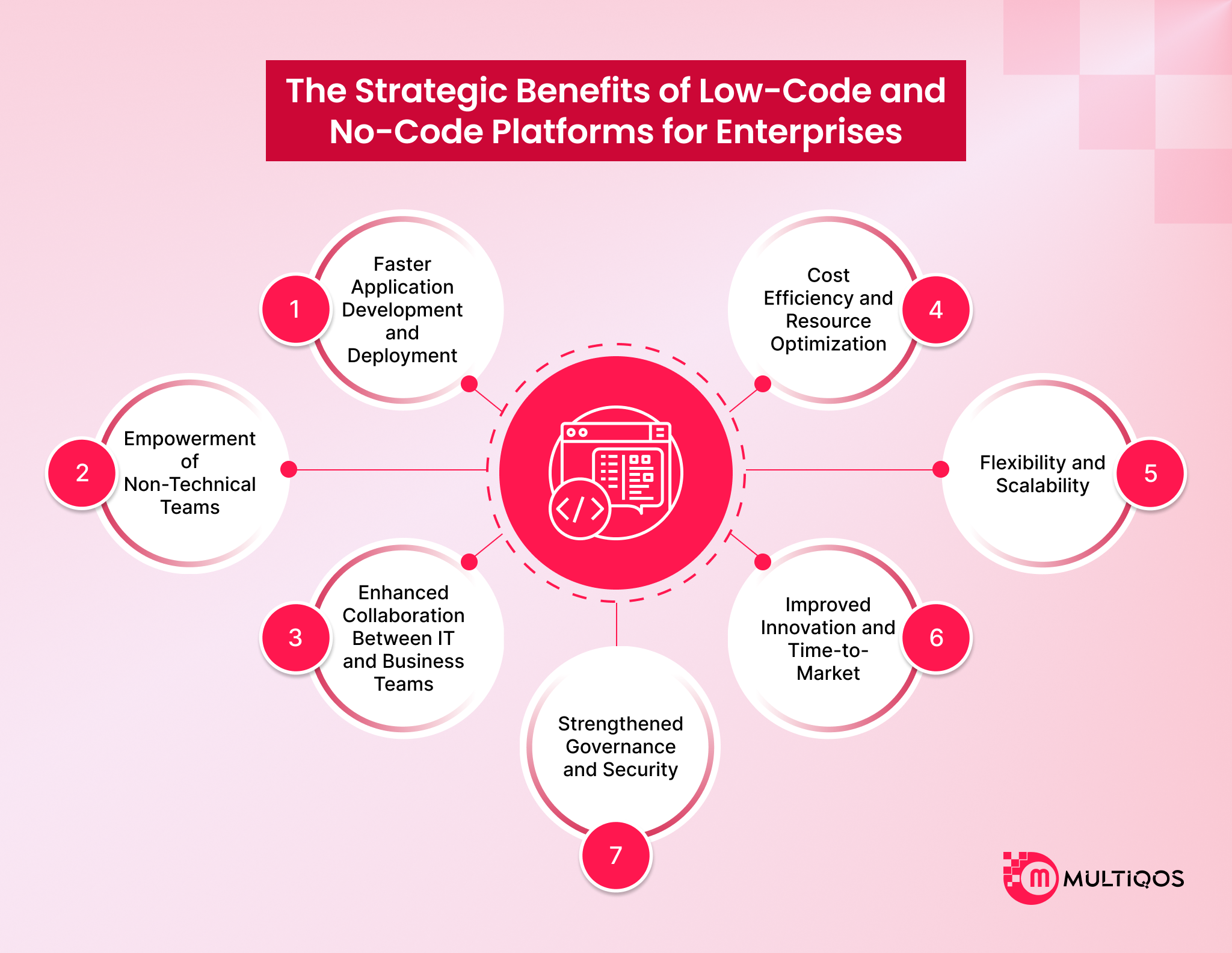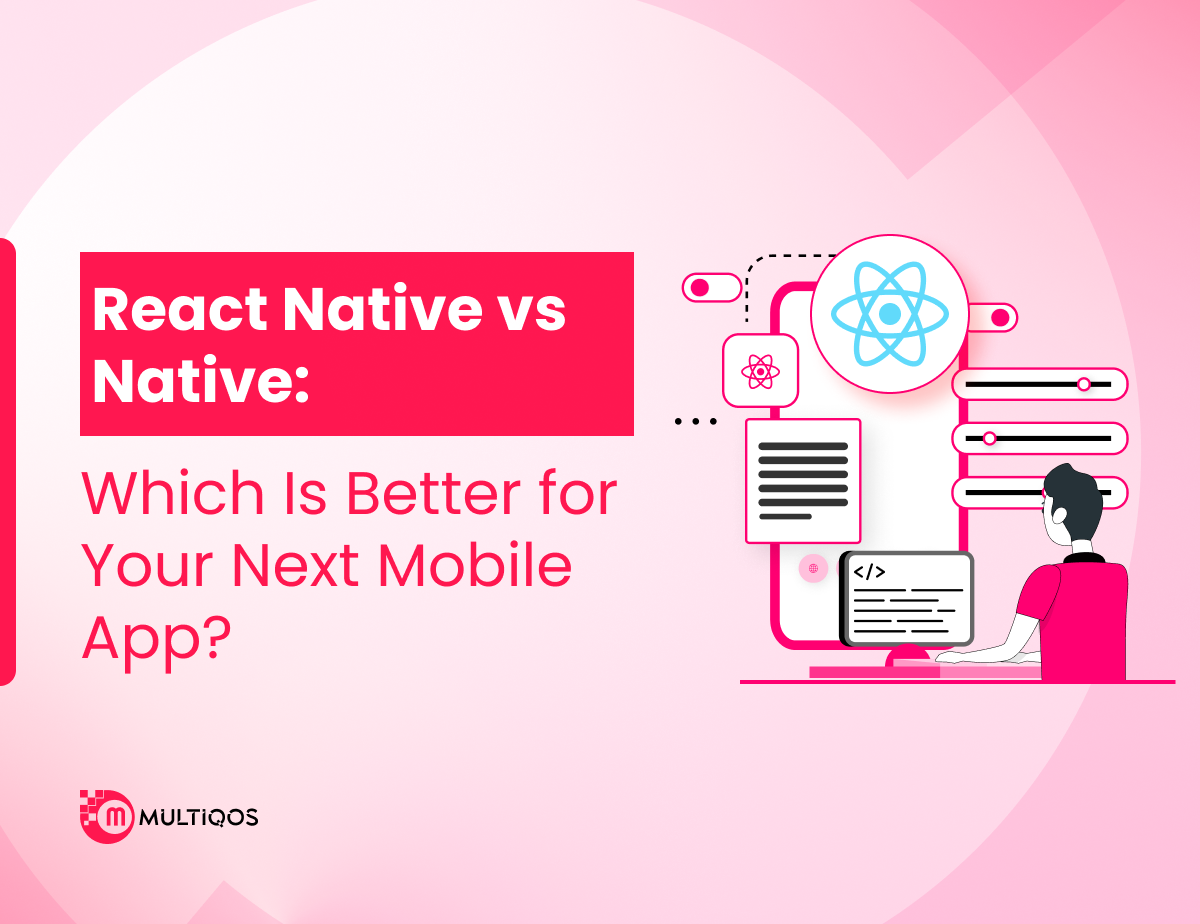Top Benefits of Using Low-Code and No-Code Platforms for Enterprise Agility

Summary:
Low-Code and No-Code Platforms for Enterprise are transforming how organizations build and deploy applications. By minimizing the need for extensive coding, these platforms enable faster development, streamline workflows, and empower non-technical teams to create innovative solutions.
Enterprises can quickly adapt to market changes, reduce IT bottlenecks, and enhance overall agility. With visual interfaces and drag-and-drop features, teams can collaborate more efficiently while maintaining control and security. Ultimately, adopting Low-Code and No-Code Platforms for Enterprise accelerates digital transformation, boosts productivity, and helps businesses stay competitive in today’s fast-paced technological landscape.
Introduction
Agility isn’t just an advantage, it’s a necessity. Enterprises are under constant pressure to innovate, deliver faster, and adapt to ever-evolving customer needs. This is where low-code and no-code platforms for enterprises are forming a game-adapting significance.
According to a Gartner report, businesses plan to use low-code and no-code platforms to develop 70% of new applications by 2025, a clear sign of how these technologies are reshaping business growth. By helping teams build applications with minimal coding, these platforms drive digital change, support non-technical users, and reduce reliance on traditional IT strategies.
In this blog, we’ll explore the optimal benefits of using low-code and no-code platforms to enhance agility and how they’re helping organizations stay innovative, skilled, and competitive in the digital age.
Understanding Low-Code and No-Code Platforms for Enterprises
Low-code and no-code platforms for firms are transforming how organizations design, develop, and deploy applications. These platforms use intuitive visual interfaces, drag-and-drop tools, and pre-produced modules that accept users to do powerful business solutions without deep programming understanding. By simplifying sophisticated evolution procedures, they empower faster delivery and reduce the dependency on massive IT teams.
For enterprises aiming to stay instant and innovative, low-code and no-code platforms provide the proper balance within speed and flexibility. They strengthen both developers and non-technical users, often called citizen developers, to collaborate competently, streamline workflows, and early respond to altering business demands.
The Strategic Benefits of Low-Code and No-Code Platforms for Enterprises
1. Faster Application Development and Deployment
One of the most major advantages of low-code and no-code platforms for enterprises is the qualification to speed up expansion cycles. By replacing customary hand-coding with drag-and-drop interfaces and reusable components, establishments can develop and deploy applications in a fraction of the moment. This rapid prosperity helps businesses respond faster to market shifts and customer demands.
2. Empowerment of Non-Technical Teams
Low-code and no-code platforms for corporations authorize business users often known as citizen developers to construct applications without considering heavy IT teams. This uplifting allows non-technical employees to streamline workflows, align procedures, and transport innovative roadmaps to life, elevating productivity across departments.
3. Enhanced Collaboration Between IT and Business Teams
Low-code and no-code platforms for enterprises bridge the gap in relation to technical and non-technical teams. Business users can design and prototype solutions without delay, while IT departments maintain oversight for submission and performance. This collaborative setting fosters finer communication, faster iterations, and resolutions that fit closely with business objectives.
4. Cost Efficiency and Resource Optimization
With low-code and no-code platforms for enterprises can uniquely reduce growth costs by minimizing the need for specialized coding ability. Tasks that once fundamental giant IT teams can now be concluded by smaller, cross-working groups. This optimization of supplies results in lower active costs and more smooth use of internal qualification.
5. Flexibility and Scalability
Enterprises need solutions that can evolve with their business, and low-code and no-code platforms for enterprises provide that flexibility. These platforms make it easy to update, scale, or integrate applications as requirements change, ensuring long-term adaptability without major redevelopment efforts.
6. Improved Innovation and Time-to-Market
By progressing growth and supportive investigation, low-code and no-code platforms for enterprises fuel innovation. Teams can shortly prototype new theories, call together solutions, and refine them without lengthy coding cycles. The result is a shorter moment-to-market and a stronger driven edge.
7. Strengthened Governance and Security
Modern low-code and no-code platforms for enterprises come equipped with formed-in administration guidelines, ensuring agreement with company-level protection standards. Centralized control allows IT teams to monitor application activity, manage permissions, and maintain data integrity, every while facilitating innovation at scale.
How to Choose Between Low-Code and No-Code Platform?
Before deciding which approach fits your business needs, it’s important to understand the key differences and factors that influence the choice between low-code and no-code platforms for enterprises.
| Factor | Low-Code | No-Code |
| Technical Skill Requirement | Requires some basic coding knowledge; ideal for professional developers and technical teams. | No coding knowledge required; designed for business users and citizen developers. |
| Customization Level | Offers high customization and flexibility to create complex enterprise-grade applications. | Limited customization; best suited for simple applications and workflow automation. |
| Use Case | Suitable for building complex, scalable, and integrated business solutions. | Best for small-scale apps, internal tools, and automating specific tasks. |
| Speed of Development | Fast development with coding flexibility; may need some IT involvement. | Extremely fast—apps can be built and deployed within hours. |
| Integration Capabilities | Strong integration options with APIs, databases, and third-party systems. | Limited integration support, depending on the platform’s built-in connectors. |
| Maintenance and Updates | Easier to maintain with shared IT oversight and built-in automation. | Minimal maintenance, platform handles most updates automatically. |
| Ideal Users | Developers, IT professionals, and enterprises require complex solutions. | Non-technical users, business analysts, and teams needing quick solutions. |
Conclusion
In a world where speed and modifiability define success, low-code and no-code platforms for enterprise software development have transformed fundamental tools for driving digital dexterity. They motivate businesses to innovate faster, streamline strategies, and reduce the dependency on traditional prosperity cycles, while maintaining control and protection. By adopting these platforms, startups can bridge the gap between IT and business teams, xxx digital metamorphosis, and stay a step forward in an increasingly goal-oriented landscape.
Whether you’re building internal tools or customer-facing applications, these platforms lay the foundation for scalable, organized, and future-ready fixes. And if your project demands a customized mobile involvement, it’s forever wise to hire mobile app developers who can assemble low-code and no-code capabilities with project-level ability to maximize performance and impression.
FAQs
These platforms hasten application prosperity and build it more straightforward for teams to adjust soon to business modifications. With low-code and no-code platforms for organization, organizations can prototype, test, and deploy solutions quickly, reducing moment-to-market and boosting responsiveness to customer and market demands.
Yes. Most startup-status low-code and no-code platforms come with formed-in safety concepts, observance requirements, and management tools. They let IT teams monitor access, manage permissions, and maintain data integrity, ensuring that applications meet venture safety standards.
Companies can construct a wide range of applications, including workflow programming tools, CRM systems, customer portals, and data management cures. Low-code and no-code platforms for project are versatile and scalable, crafting them worthy for both internal operations and customer-facing applications.
Yes. Most low-code and no-code platforms for enterprises substitute API consolidation and data connectivity with existing business systems like ERP, CRM, or cloud applications. This allows seamless data flow and ensures that newly constructed apps work neatly within the existing IT infrastructure.
At MultiQoS, we specialize in helping businesses harness the might of low-code and no-code platforms for organizations to hasten digital evolution. Our proficient team guides you through platform categorization, app advancement, blending, and deployment, ensuring scalability and gathering resolutions that coordinate with your ends.
Get In Touch







